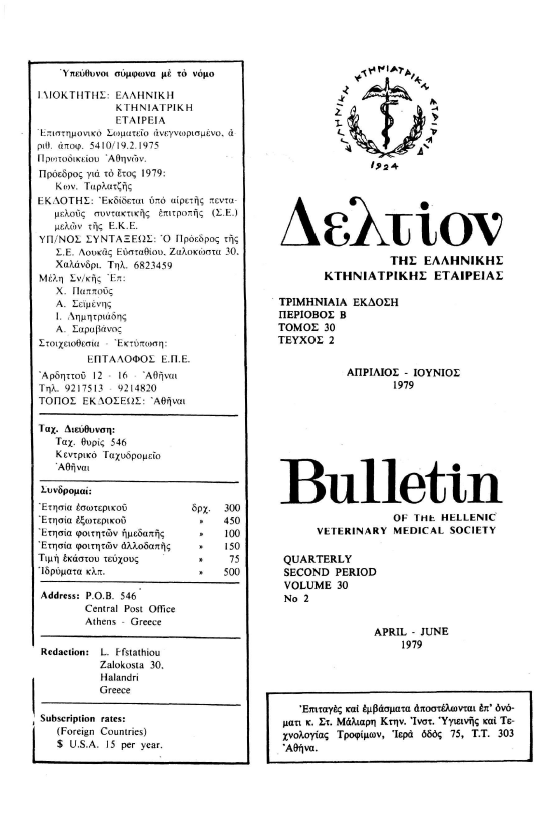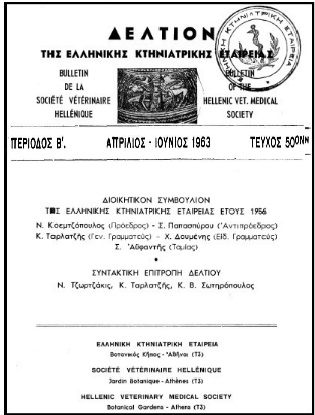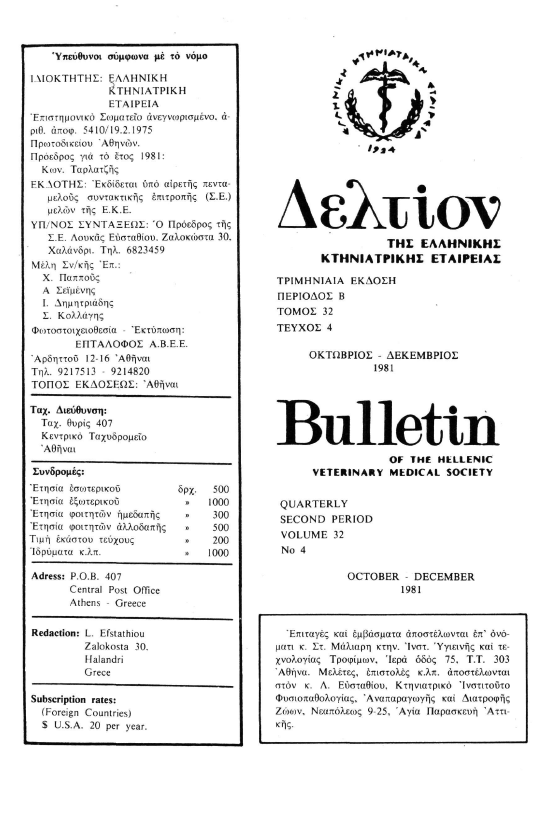Synchronization of eostrus in goats with prostoglandin F 2α and progestin map
Abstract
During the goat breeding season, 45 cyclic does, aged between 2 to 5 years, were divided into two groups A and Β of 20 and 25 animals, respectively. These animals were on the 4-16th day of their cycle. The 20 does of group A were injected IM with 15 mg prostaglandin F (Panacelan). Oestrus was manifested in 90.0% of the does within 4 days after treatment. Blind inseminations performed on the 3rd and 4th day after the treatment resulted in a satisfactory pregnancy rate (77.8%). The 25 does of group Β were treated with intravaginal sponges, impregnated with 50 mg MAP (Veterdif) for a period of 16 days. Oestrus was manifested in 20 out of 22 does (90.9%) within 4 days after the withdrawl of sponges. Blind inseminations performed on the 2nd and 3rd day after the treatment resulted in a low pregnancy rate (55.0%). It is concluded that the use of prostaglandin FQ may be a useful means for achieving oestrus synchronization and satisfactory fertility in goats.
Article Details
- How to Cite
-
ΚΑΡΑΠΑΝΝΙΔΗΣ Α., & ΤΣΑΚΑΛΩΦ Π. (2019). Synchronization of eostrus in goats with prostoglandin F 2α and progestin map. Journal of the Hellenic Veterinary Medical Society, 30(2), 117–127. https://doi.org/10.12681/jhvms.21387
- Issue
- Vol. 30 No. 2 (1979)
- Section
- Articles

This work is licensed under a Creative Commons Attribution-NonCommercial 4.0 International License.
Authors who publish with this journal agree to the following terms:
· Authors retain copyright and grant the journal right of first publication with the work simultaneously licensed under a Creative Commons Attribution Non-Commercial License that allows others to share the work with an acknowledgement of the work's authorship and initial publication in this journal.
· Authors are able to enter into separate, additional contractual arrangements for the non-exclusive distribution of the journal's published version of the work (e.g. post it to an institutional repository or publish it in a book), with an acknowledgement of its initial publication in this journal.
· Authors are permitted and encouraged to post their work online (preferably in institutional repositories or on their website) prior to and during the submission process, as it can lead to productive exchanges, as well as earlier and greater citation of published work.








